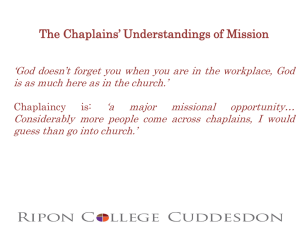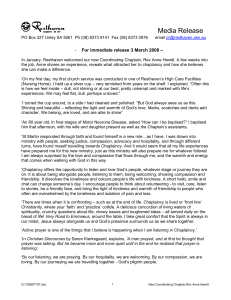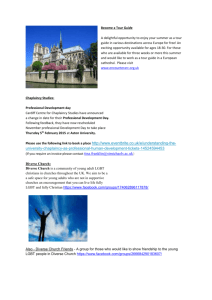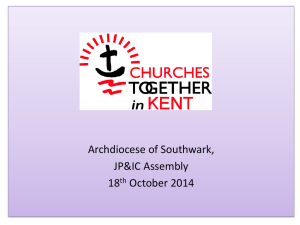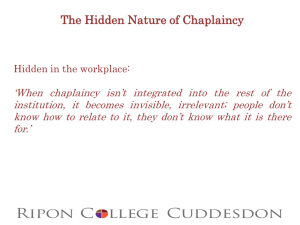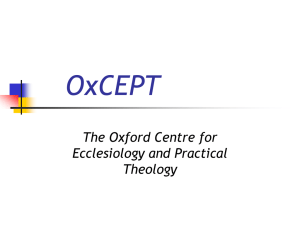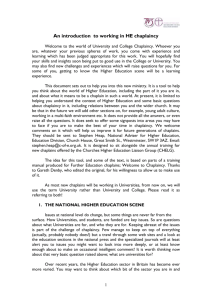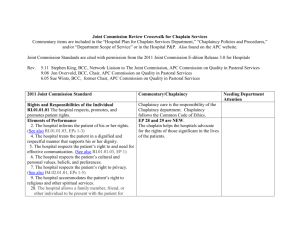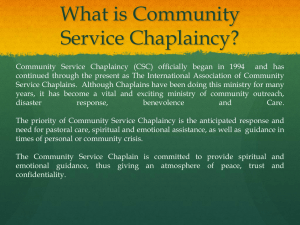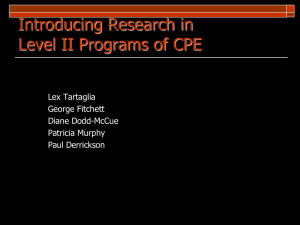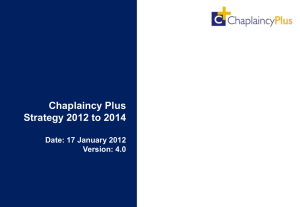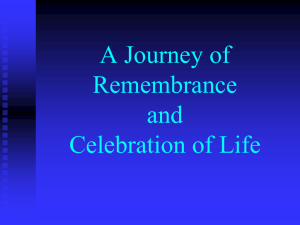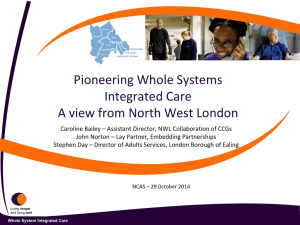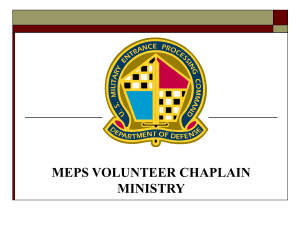Presentation 1
advertisement
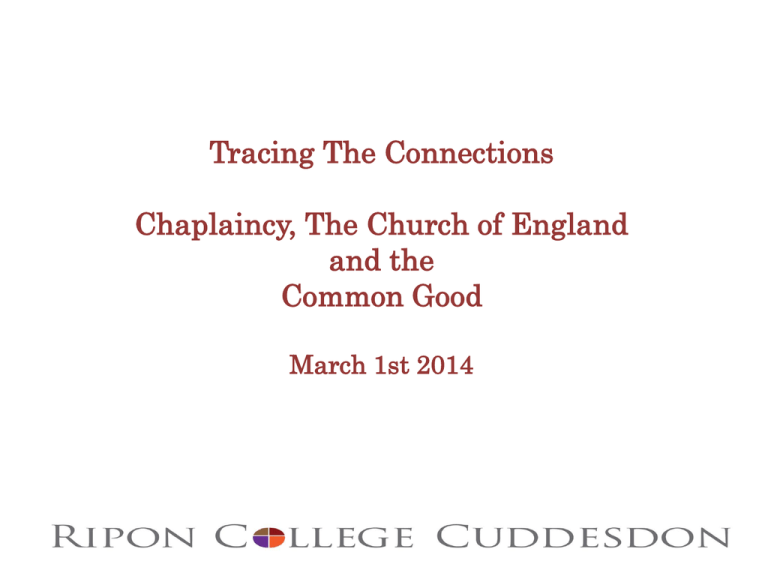
Tracing The Connections Chaplaincy, The Church of England and the Common Good March 1st 2014 Research Aim To investigate Church of England involvement in chaplaincy across a variety of contexts … in order to provide: • A coherent account of the extent and nature of the work • A narrative of the work that can represent chaplaincy in church and non-church contexts • Recommendations for how chaplaincy can be supported & developed as part of the Church of England’s strategy for mission & ministry. Research Objectives • To map the Church of England’s current involvement in chaplaincy • To conduct qualitative case studies • To test the coherence of the findings & develop them through further consultation with chaplains & others • To produce a report of the findings including recommendations for future strategy The Case Studies Hospital: large public sector chaplaincy in an urban context over two geographical settings Industry: workplace chaplaincy set in multiple geographical locations in an urban context Commercial companies Sector: urban chaplaincy including large Police: public sector chaplaincy covering stations across a rural county University: suburban Cathedrals chaplaincy on one campus Group university Models of Chaplaincy 1. Full-time ordained chaplain paid by host institution or organization e.g. lead hospital or university chaplain 2. Full-time ordained chaplain paid by Church of England (or office holder) primarily to practice and co-ordinate chaplaincy e.g. leader of industrial chaplaincy organization for the diocese or lead commercial and police chaplains 3. Ordained part-time chaplains who are parish priests and give part of their time to the work as a way of engaging with the community Models of Chaplaincy 4. Part-time lay chaplain, paid by the host organization e.g. the LLM who works part-time in the hospital as a chaplain and volunteers a few hours a week in a workplace chaplaincy 5. Volunteer ordained chaplain e.g. a retired fire service chaplain 6. Volunteer lay chaplains or chaplaincy volunteers who could be licensed lay ministers or lay members of congregations e.g. found in the police, industry and retail contexts Some Implications of the Diversity of Models • Difficult to find accurate and reliable quantitative data • Chaplaincy is almost invisible within central ministerial and missional discourses of the Church of England • Lack of conceptual clarity about what chaplaincy is. • Reluctance to resource chaplaincy Four Characteristics of Chaplaincy (Victoria Slater) 1. A distinctive ministry undertaken in the public square by representative and authorised ministers (lay & ordained), embedded characteristically in social rather than church structures and focussing the vocation of the church to serve the mission of God in the world 2. Roles are publicly recognized and validated by both the host organization/network and the faith community Chaplaincy Characteristics (Victoria Slater) 3. Chaplains are appropriately accountable to both the host organization/network as well as to their faith community and contribute both to the mission of the context in which they work as well as to that of the church 4. Chaplains work in a professional way with specific knowledge, skills and training relevant to their work context
